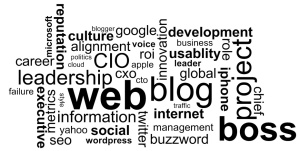Every department needs to develop key performance indicators to measure performance. IT is no exception. In fact, it is probably more important for IT to have a set of KPIs to show overall performance in the business. This supports the mission of IT to add value to the organiztion. For my department I have been tracking the following KPIs. I have been tracking on a weekly basis to keep an eye on trends that may develop. Your organization may be different but I would recommend that you track with more frequency then less.
Financial Management:
- Percent of IT cost vs. total revenue of the
organization - Percent of keeping the lights on cost compared
to the total IT cost - Dollars saved due to productivity improvement
initiatives - Average seat/resource cost trending over (Month
to Month)(Quarter on Quarter)(Year to Year) - Actual spend vs. budget (Month to Month)(Quarter
on Quarter)(Year to Year)
Project Performance:
- Percent of projects completed within schedule
and budget - Percent of projects exceeded their original
schedule and/or budget by xx % (we use 10%) - Percent of project time consumed by rework due
to defect fixes and scope changes - Number of known defects released to production
- Percent of projects initiated without an
approved business case
Operations Management:
- Business critical system/application uptime
- Average turnaround time for fixing production
incidents - Number of production incidents by severity
- Percent of service requests/tickets closed
within the SLAs - Average time to resolution for service tickets
- Business time lost due to unscheduled downtime
Information Security:
- Number of security breaches/incidents in systems
and infrastructure - Percent of systems/applications compliant to
security policies/standards - Percent of security patches applied within
timelines/deadlines
The above KPIs have been graphed in Excel using the raw data collected. Again I track on a weekly basis which make it easy to slice and dice the data when asked. We have now started the process of incorporating this information into a dashboard format. We are using a product from iDashboard to help convert this data. It is recommended that a developer be involved to write scripts to interpret this data. Taking raw Excel data and importing in iDashboards was not clean and required additional coding. The end result will be to see this information in a clean graphical format wit the push of a button.

